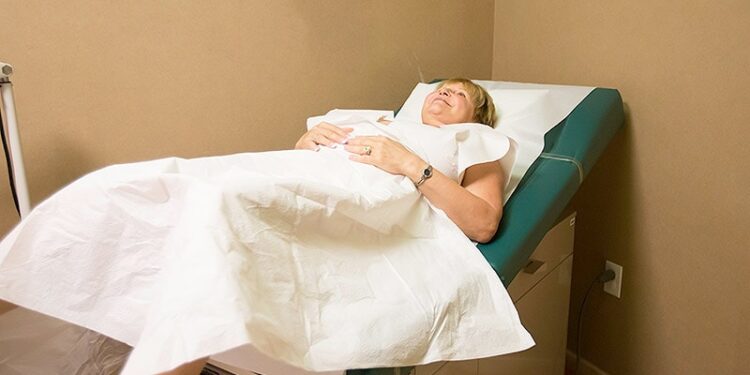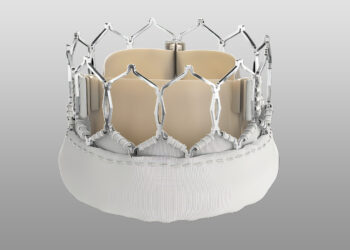[ad_1]
Incidence of preliminary cervical cancer decreased by approximately 80% among women aged 20-24 years in the United States since the widespread use of the human papillomavirus (HPV) vaccine, according to new data from the Centers for Disease Control and Prevention (CDC).
The HPV vaccine was first recommended in 2006 for the prevention of cancers and disease caused by HPV, and the CDC has tracked the incidence of precancerous lesions since 2008 as a method of monitoring the vaccine’s impact, wrote Julia W. Gargano, PhD, of the CDC’s National Center for Immunization and Respiratory Diseases, and colleagues.
In a study published in the Morbidity and Mortality Weekly Report, the researchers reviewed data from the HPV Impact Monitoring Project (HPV-IMPACT) and identified trends in cervical intraepithelial neoplasia 2+ (CIN2+; defined as CIN grades 2-3 and adenocarcinoma in situ) and CIN3+ (defined as CIN grade 3 and adenocarcinoma in situ).
The study included data from 2008-2022 on women aged 20-64 years; a total of 39,977 CIN2+ cases were reported, included 13,027 (32.6%) CIN3+. Overall, the number of CIN2+ cases per 100,000 women screened decreased by 11% each year for women aged 20-24 years, for a 79.5% reduction from 2008 to 2022. For women aged 25-29 years, the incidence of CIN2+ increased by 3.1% each year from 2008-2016, then decreased by 4.3% from 2016-2022, but the annual percent change remained stable, the researchers wrote.
The incidence of precancer trended up from 2008-2016 and down from 2016 to 2022 for women in their 30s, while CIN2+ incidence increased significantly from 2008 to 2022 for women aged 40-64 years.
Public Health Perspective
The findings were limited by several factors, including the use of claims and survey data to identify women screened for cervical cancer, which might yield inaccurate precancer rates, and changes in screening and management guidelines over time, the researchers noted. Other limitations included the inability to show causality between vaccination and precancer incidence, and the inconsistent catchment and screening between the current study and previous reports from HPV-IMPACT, they said.
However, the results are consistent with the ongoing impact of the HPV vaccination program in on reducing cervical precancers in the United States, the researchers wrote in their discussion. “The data also suggest that precancer incidence in age groups ≥ 25 years, which were previously observed to increase through 2015, have begun to decrease,” they noted.
Clinical Considerations and Research Gaps
“Since HPV-related cancers take years to develop, tracking precancers offers an early indicator of the vaccine’s effectiveness,” said David M. Higgins, MD, a pediatrician and preventive medicine specialist at the University of Colorado Anschutz Medical Campus, Aurora, Colorado, in an interview.
“Earlier research from the HPV-IMPACT project showed decreasing cervical precancer rates in young women but lacked long-term data on those vaccinated at the recommended ages; this updated study provides a clearer picture of the vaccine’s impact in a population more likely to have been vaccinated,” said Higgins.
“The findings confirm what we already know: HPV vaccination prevents cancer and saves lives; now the priority must be closing vaccination gaps, addressing hesitancy, and ensuring every eligible adolescent is vaccinated long before they are exposed to HPV,” he said.
“The magnitude of the decline in cervical precancers was striking, but not entirely surprising given previous research demonstrating the vaccine’s high effectiveness, and these results strongly reinforce the need for continued HPV vaccination efforts,” Higgins said.
The takeaway message is that HPV vaccination works, and clinicians should be confident in recommending vaccination early and on time, Higgins told Medscape Medical News. Confident recommendations from providers are key factors in vaccine uptake, he said. “Clinicians should frame the HPV vaccine as cancer prevention and provide strong, proactive guidance to increase acceptance among hesitant parents,” he added. Even if children missed HPV vaccination at the earliest opportunity, catch-up vaccination is still valuable, said Higgins.
The rise of vaccine misinformation in conventional and social media, has contributed to growing distrust in vaccines in general, including the HPV vaccine, and trusted messengers such as pediatricians, ob/gyns, and public health experts, must respond with evidence-based messaging that emphasizes cancer protection, Higgins noted. “Social media has amplified false claims that the HPV vaccine causes infertility, autoimmune disorders, or promotes early sexual activity — despite no scientific basis,” he said.
“While declines in cervical precancer are promising, continued surveillance is needed to measure reductions in invasive cervical cancer, particularly in vaccinated populations as they age,” he said. More data on the impact of HPV vaccination on other cancers, especially oropharyngeal and oral cancers, is critical as well, he noted.
Research also is needed to evaluate evidence that a single dose of HPV vaccine may provide substantial protection; if true, this would improve the accessibility and cost-effectiveness of vaccination programs, especially in limited-resource settings, Higgins added.
The study received no outside funding. Gargano and Higgins had no financial conflicts to disclose.
[ad_2]
Source link : https://www.medscape.com/viewarticle/hpv-vaccine-succeeds-against-cervical-precancers-2025a100062r?src=rss
Author :
Publish date : 2025-03-13 05:06:00
Copyright for syndicated content belongs to the linked Source.














